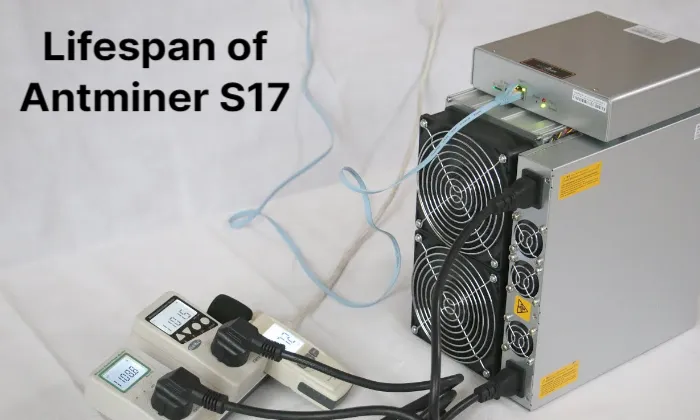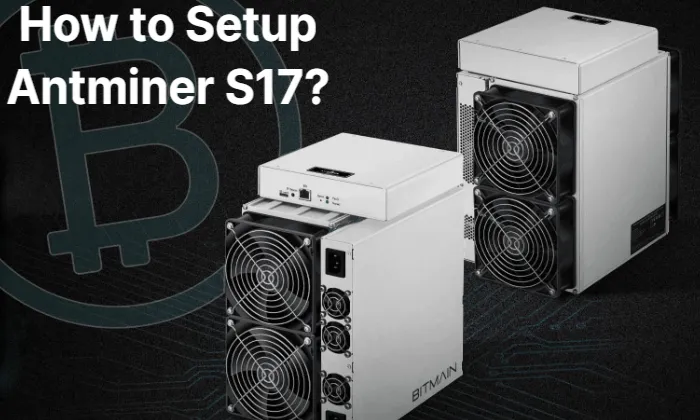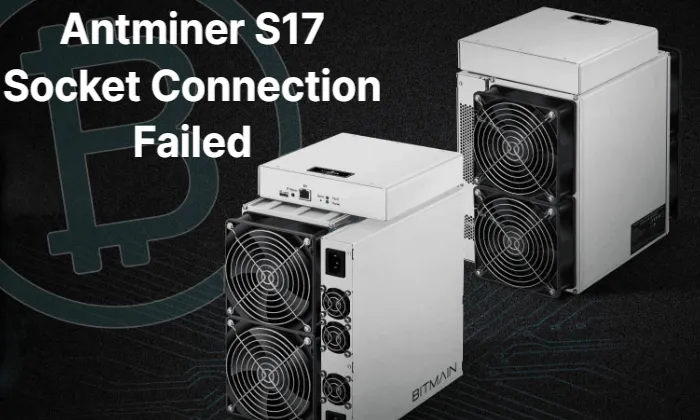In this post, we’ll discuss how many solar panels to run Antminer S17 and whether Solar Panel is good for Bitcoin mining as well as profitability.
The Proof-of-Work (PoW) algorithm is used to verify transactions, and mining is one of the most common ways for people and organizations to earn passive income using cryptocurrencies like Bitcoin (BTC). However, critics frequently point out the energy consumed in this process.
Crypto mining powered by solar energy is becoming a practical and sustainable way to run the energy-intensive process of mining digital assets. The amount of energy needed for mining cryptocurrency also keeps rising along with demand. Crypto mining is environmentally friendly and less expensive overall thanks to solar power.
With this in mind, crypto YouTuber Drew Vosk has looked into a more ecologically acceptable way to produce electricity for Bitcoin mining – solar panels – and has analyzed the numbers in a video published on his channel on January 18.
Table of Contents
How Many Solar Panels Are Needed for An Antminer S17?

A mining rig’s monthly electric consumption is multiplied by the number of peak sun hours in a month, then multiplied by 1,000 to determine how many solar panels are required. Following that, the result is divided by the solar panel’s power rating.
In actuality, an Antminer S17 consumes 72 kWh per day, which when multiplied by 30 days results in 2,160 kWh per month. The result is 13,84 when this number is divided by the average number of peak sun hours per month, which is 156. This yields 13,846 watts when multiplied by 1,000.
When this amount is divided by 400 and applied to a typical 400-watt solar panel, the result is 34.6. This roughly translates to 35 solar panels being required to power one Antminer S17. To mine Bitcoin using solar power, you would therefore require a 14kWh solar system.
The amount of energy one can obtain from the sun varies depending on where on Earth you are, says Vosk, so keep that in mind. For instance, due to the climate in London, United Kingdom, this would never be practical. Nearly twice as many solar panels would be required there.
How Many 300 Watt Solar Panels Would Be Needed to Power 30 Antminer S17 Pro 50-62 Th/s
At almost 2KW/H (EACH) you will need at an absolute minimum 7x 300W = 2100W (TO POWER 1X ANTMINER S17 Pro). But Solar doesn’t work that way as it is not 100% efficient. At absolute peak power output which happens between 10:00 and 14:00 (depending on your location you may never get peak power output) you will be able to generate just enough power 1x Anminer during these times. You will also need at a minimum a 3KW grid tied inverter.
If you would like to power 1 ant-miner 24H/7 you will need at least.
14H battery power @ 2KW/H = 28KW. Using lithium batteries you will need a 40KW battery
20x 300W = panels to supply 2KW (miner) + 4KW (battery charge) at peak times only and is also the minimum rate that you can charge the lithium battery at. At this rate you will need 10 hours of perfect sun light (equal to 12:00 noon) to recharge the battery. To compensate for this you will in fact need to have double the amount of panels and a much larger charger on the inverter.
Are Solar Panels Good for Bitcoin Mining?
Bitcoin mining requires a significant amount of solar power, which varies depending on a number of variables, including the size of the mining operation, the effectiveness of the mining equipment, and the amount of sunlight available in the region. However, one estimate suggests that a single bitcoin mining rig can consume anywhere from 500 watts to 1.5 kilowatts of power. assuming that each mining rig uses 1 kilowatt of power on average. To power a single mining rig, enough electricity would need to be produced by about ten solar panels, with a typical capacity of 300 watts each. This means that a small-scale mining operation with 10 rigs would require around 100 solar panels, with a total capacity of 30 kilowatts, to power their operations.
The energy demand for solar mining crypto rigs directly correlates with the number of graphic processing units (GPUs). A standard solar mining crypto rig requires approximately 400 to 500 watts of electricity per day. Which can hike up to 900 to 1500 watts if we use more The mining rig’s GPUs. The energy needed for solar-powered crypto mining also depends on how much sunlight is present in your area. Your solar panels will produce more energy in an area with more sunlight. Consequently, fewer solar panels will be installed in the area. A typical sunny day in the United States will yield about 5500 watts of electricity which means 229 watts of electricity per day. Therefore, three square meters of solar panels are needed to power a single rig, and six square meters are needed to power multiple rigs.
The energy needed for solar-powered crypto mining also depends on how much sunlight is present in your area. The amount of energy produced by your solar panels will increase depending on how sunny the area is. decreasing the quantity of solar panels in the area. A typical sunny day in the United States will yield about 5500 watts of electricity which means 229 watts of electricity per day. As a result, you’ll need three square meters of solar panels to power a single rig and six square meters for multiple rigs.
In conclusion, crypto mining using solar energy has a number of advantages, such as lower electricity costs and a smaller carbon footprint. Nevertheless, it also has its own share of drawbacks, including the erratic nature of solar energy and the up-front installation costs. with the help of energy-efficient hardware, energy storage options, and clever mining algorithms, they can maximize their mining operations. An environmentally friendly future can be achieved by crypto miners by utilizing solar energy. Crypto mining’s future is likely to change and adapt as society continues to research new technologies and renewable energy sources.
Costly Endeavor
Due to tax incentives, 15kWh of solar panels cost $31,191 in the United States (without incentives, this cost would be $42,150). One Bitcoin miner would cost $31,000 to run round-the-clock, which would be rather expensive in terms of return on investment.
To put this into perspective:
“You could install the miner instead of the solar panels if you paid your electric company 10 cents per kWh for 10 years of operation at the current rates. When you deal with solar energy, we’re talking years – not months, not weeks, definitely not days – as far as ROI, break-even,” Vosk said.
However, the crypto YouTuber also believes that “nothing is cooler than generating your own electricity” and “when you throw the electric waste argument out the window when it comes to crypto and especially mining, well, then it’s truly a beautiful and powerful, indisputable thing.”
But is It Profitable?
Nevertheless, it would cost about $258,000 to install a solar energy system for a farm of 10 mining units. Currently, it is estimated that it will take around 10 years to break even. An investment of $1,790,000 would be required to deploy 50 mining units, while running 25 units would cost approximately $645,000 in the solar setup. However, this would generate about $29,730 in mining revenue each month.
As an illustration, the innovative and environmentally friendly Bitcoin mining pool PEGA Pool charges renewable energy miners only 1% mining fees, which is less than half of the industry average of 2%, increasing mining profitability.
Although Vosk admits that solar-powered Bitcoin mining would take a long time to break even, he stresses to “keep in mind Bitcoin’s low – all you need to do is ‘hodl‘ some coin, things go decently, and that number will dramatically decrease,” as well as that “all New Bitcoin halvings have come before Bitcoin’s all-time highs.”
In a curious move to reduce the carbon footprint of mining the flagship decentralized finance (DeFi) asset, South Australia’s first solar-powered Bitcoin mining facility recently began operations, supplying about five mW of electricity.
By installing an off-grid solar array to power his Bitcoin mining operation, Peter Egyed, also known as AZ Hodl, was reported on by Finbold in March 2022. He also shared the findings of his research, estimating that he would see a return on investment (ROI) in 36 months.
FAQs
How Much Power Does Antminer S17 Use?
Antminer S17 SpecsThe power consumption rates for this model range from 39.5 Joules per terahash (J/TH) up to 45 J/TH. This equates to 2094 watts to 2568 watts per hour of typical use, though power consumption may rise if the surrounding environment is warmer than the device’s normal operating range.
Can Solar Panel Power An Antminer?
I was astounded at how simple it was to power my Antminer with just a few solar panels, even though my project is still in the planning stages. I am able to power the Antminer as long as the sun is out 100% on solar and battery storage. I switch the Antminer back to grid power in the late afternoon once the sun has set.



